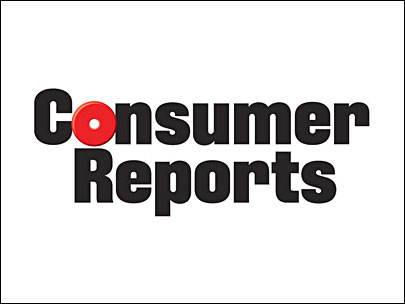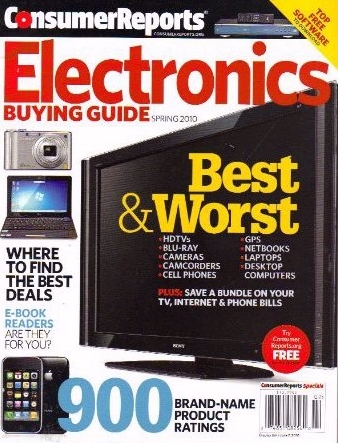
Amazon’s latest tablets just received some great new reviews from a prestigious source.Consumer Reports magazine performed tests on 55 different tablet devices, and this week they’re finally annoucing the results. “Amazon and Samsung Models Stand Out in the Ratings,” reads the headline at their web site. “A Kindle Fire is the least-expensive tablet we’ve ever recommended.”
In fact, Amazon’s new Kindle Fire HD is described as “among the best 7-inch tablets on the market.” Out of all the 7-inch tablets they’d tested, it was the Kindle Fire HD that had the longest battery life. The magazine also had nice things to say about the cheaper $159 Kindle Fire, applauding Amazon’s second-generation version for its longer battery life — though what they really seemed to love best was its $159 price tag. But there’s a different story in the table of ratings in the print edition of Consumer Reports.
In the October issue, only the original version of the Kindle Fire appears to be listed, and at its old price of $200. (Presumably the magazine’s print edition was written before they’d tested the yet-to-be-released Kindle Fire HD.) And at that time, the magazine had only performed tests on 23 different tablets. But they’d already selected five of them for their coveted “best buy” recommendation — and Amazon’s Kindle Fire was one of them.
 
But the top scores had gone to Google’s Nexus 7 tablet, which they’d actually rated higher for battery life and portability. Out of all their criterion, it received a final score of 80, and even Samsung’s Galaxy Tab 2 scored higher than the Kindle Fire, with a score of 77 (beating Amazon’s device in the “versatility” category.) The Blackberry Playbook scored higher too, also receiving a better “versatility” rank and achieving a final score of 71. The Kindle Fire’s final score in the October issue of Consumer Reports is listed as just 67.
It still achieved the second-highest possible score in four of the magazine’s five test categories – Ease of Use, Portability, Display, and Touch Response. But it received the middle rating for its versatility. In a way, I’m surprised the magazine even published these results at all.
They’re obsolete almost as soon as the magazine hits the newsstands.
Because within a week or two, Amazon’s going to start shipping out entirely new versions of the Kindle Fire!
 
 
